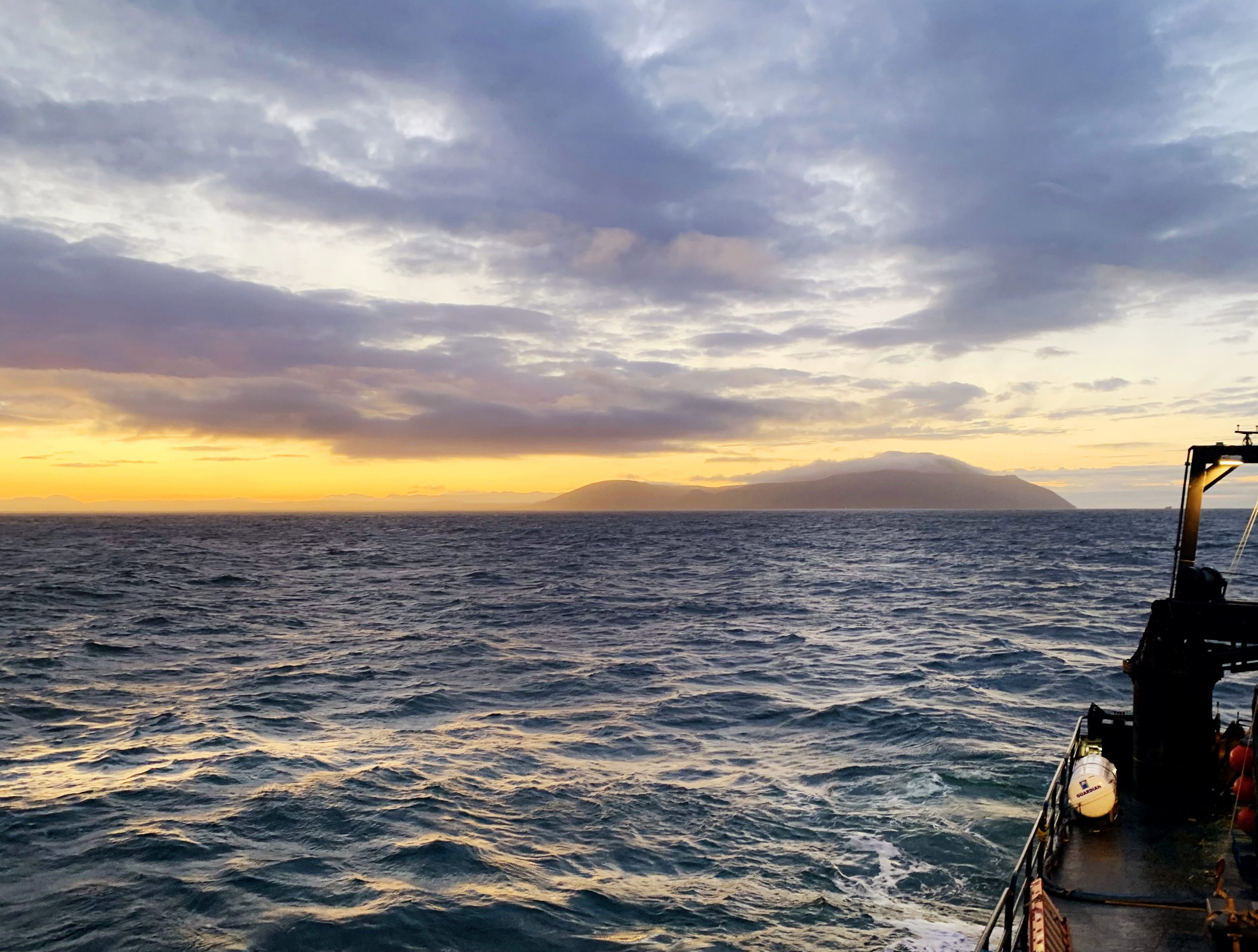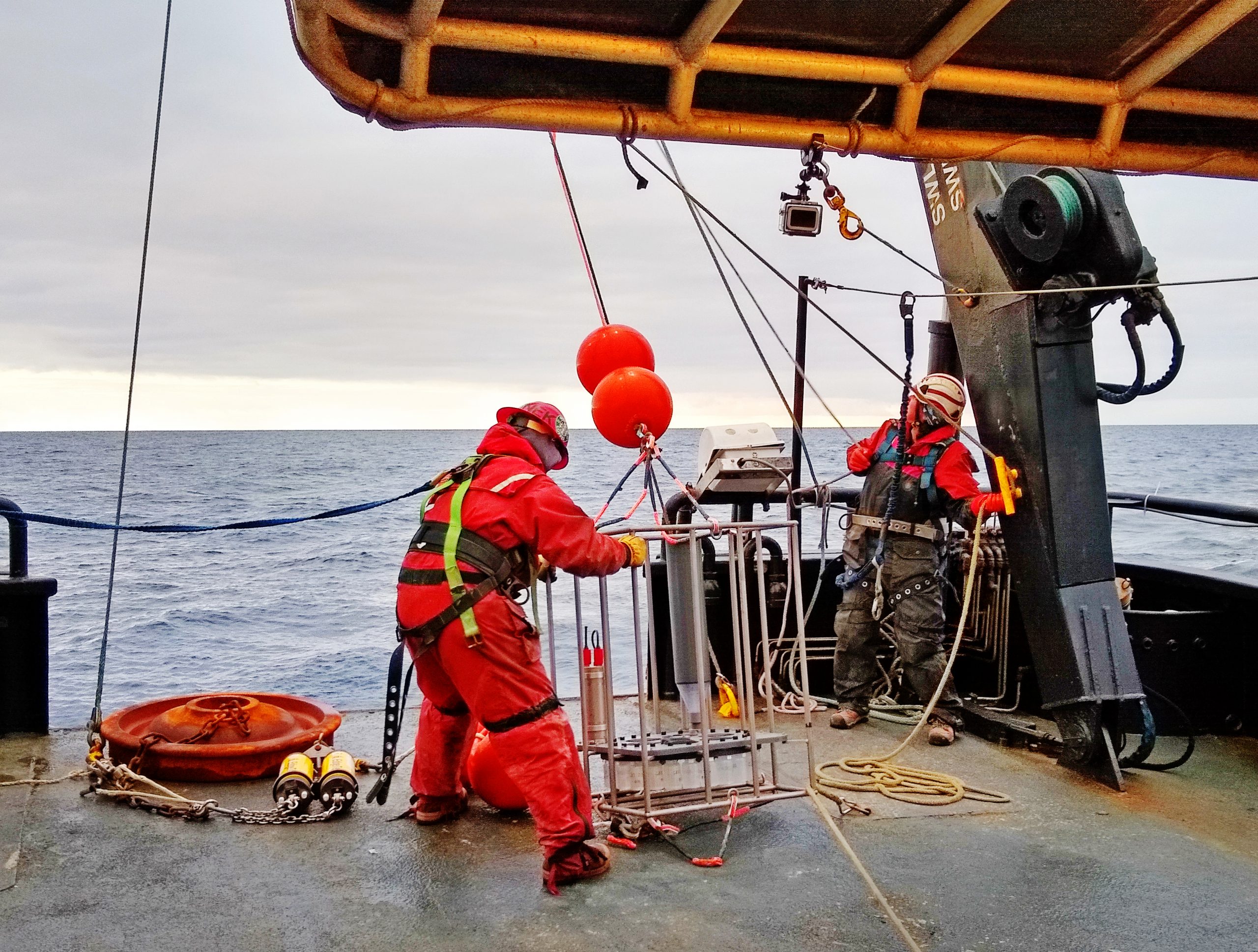COVID-delayed Arctic research cruise yields late-season data
November 11, 2020
Alice Bailey
907-328-8383

Researchers studying the Bering and Chukchi seas for three weeks in October found no ice and a surprisingly active ecosystem as they added another year’s data to a key climate change record.
The research vessel Norseman II carried scientists from the University of Alaska Fairbanks, the University of Maryland Center for Environmental Science and Clark University.
Maintaining the continuity of long-term observations is crucial as the region is affected by climate change. For example, the researchers collected sediments and small bottom-dwelling animals to help document harmful algal blooms that are becoming more common as Arctic waters warm. The blooms pose a threat to the humans and marine mammals that eat them.
Because of pandemic-related delays, the cruise began on Oct. 2 — a much later start than originally planned. Historically, the Bering and Chukchi sea ecosystem transitioned to lower-level activity as sea ice formed in October.
This year, unseasonably warm ocean temperatures delayed sea ice formation by several weeks. The lack of ice likely allowed the greater biological activity observed by the researchers.
“The recovered data are already showing the effects of oceanic heat that extends further into the fall and early winter,” said Seth Danielson of UAF’s College of Fisheries and Ocean Sciences.
The scientists collected data for several marine science programs monitoring the Pacific Arctic ecosystem.
The Distributed Biological Observatory, led by Jacqueline Grebmeier of UMCES, has been sampling productive hot spots since the late 1980s in U.S. Arctic waters.
The Arctic Marine Biodiversity Observing Network, led by Katrin Iken at UAF’s College of Fisheries and Ocean Sciences, is part of a national network studying how biodiversity and species distributions are changing as a result of climate change in the U.S. Arctic.

The researchers also visited the Chukchi Ecosystem Observatory, a set of highly instrumented oceanographic moorings that monitor the ecosystem year-round. “We only get one chance each year to deploy fresh sensors with new batteries, so this cruise was important to avoid interruptions to the observations,” said Danielson, who leads the project.
“This was a really worthwhile effort that paid off in making biological data available from a part of the year where there have been historically few observations,” said Grebmeier, the cruise’s chief scientist.
To protect communities in the Bering Strait from potential exposure to the COVID-19 virus, the team completed quarantines and multiple tests in Anchorage before the cruise. They traveled by chartered aircraft to Nome and were taken directly to the research vessel, bypassing the passenger terminal.
Everyone aboard also adhered to COVID-19 health and safety mandates from their institutions and followed an isolation and travel plan in accordance with the Port of Nome and the State of Alaska.
Funding for the cruise was provided by the National Oceanic and Atmospheric Administration, the North Pacific Research Board and the National Oceanic Partnership Program, which also includes funding by the Bureau of Ocean Energy Management.


